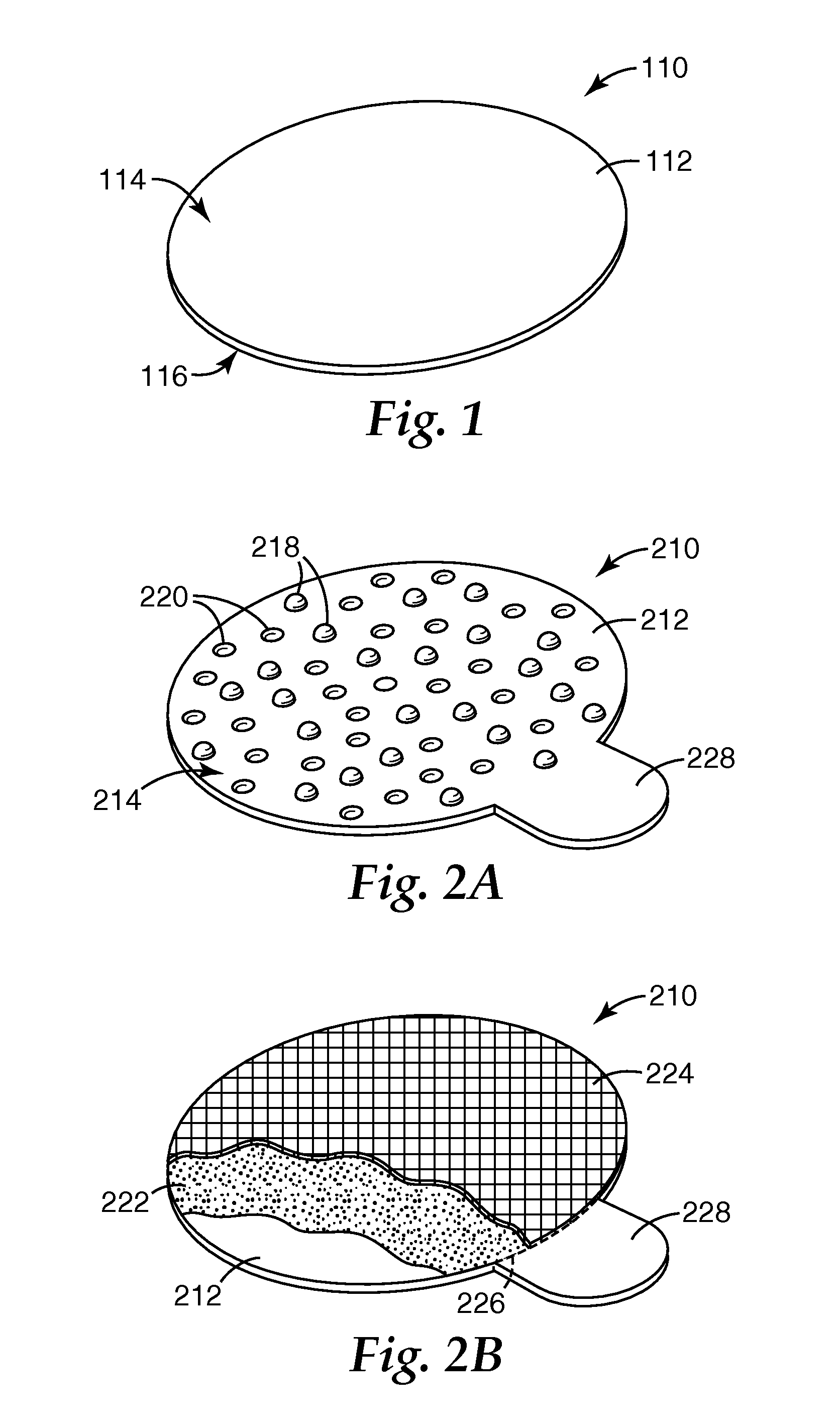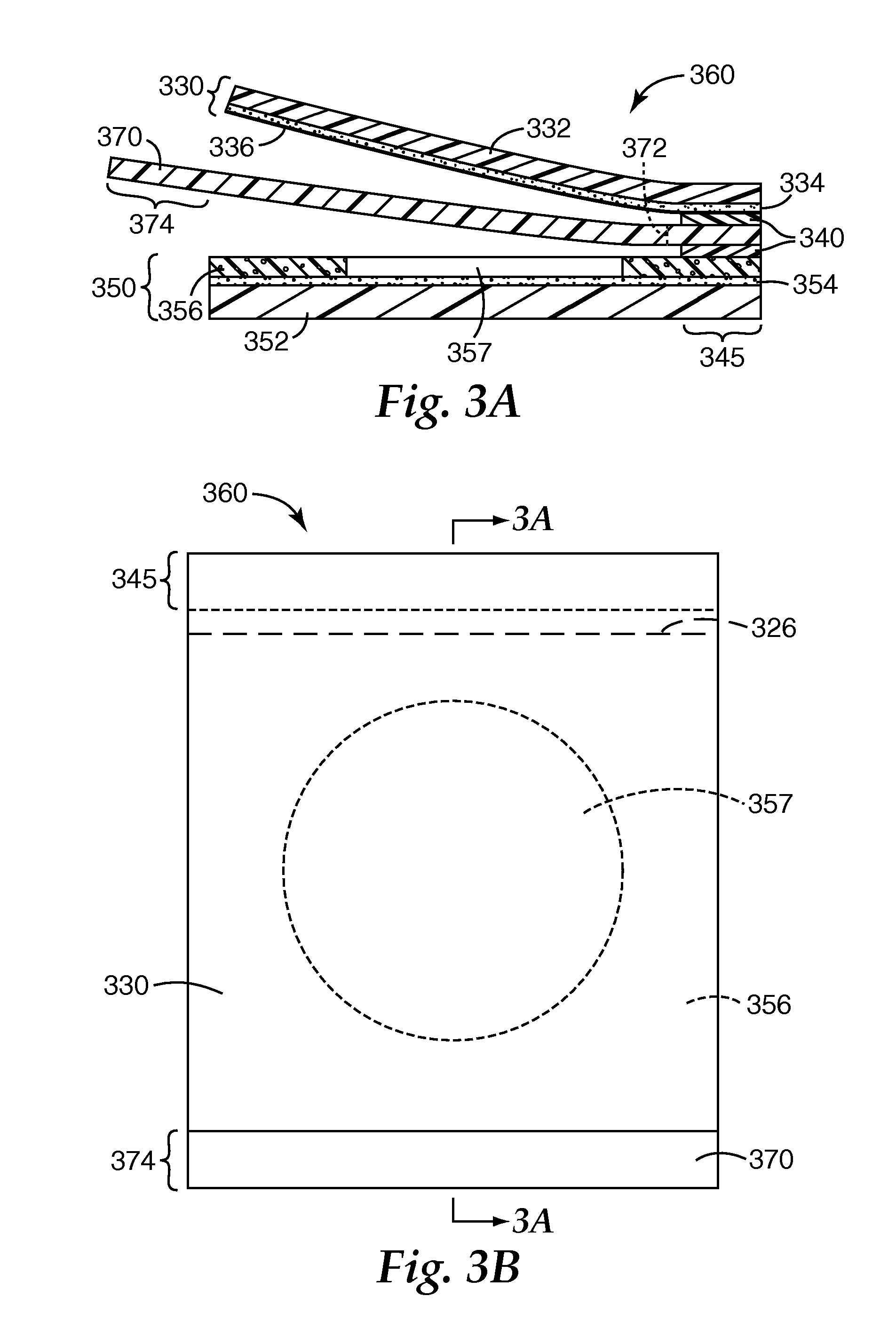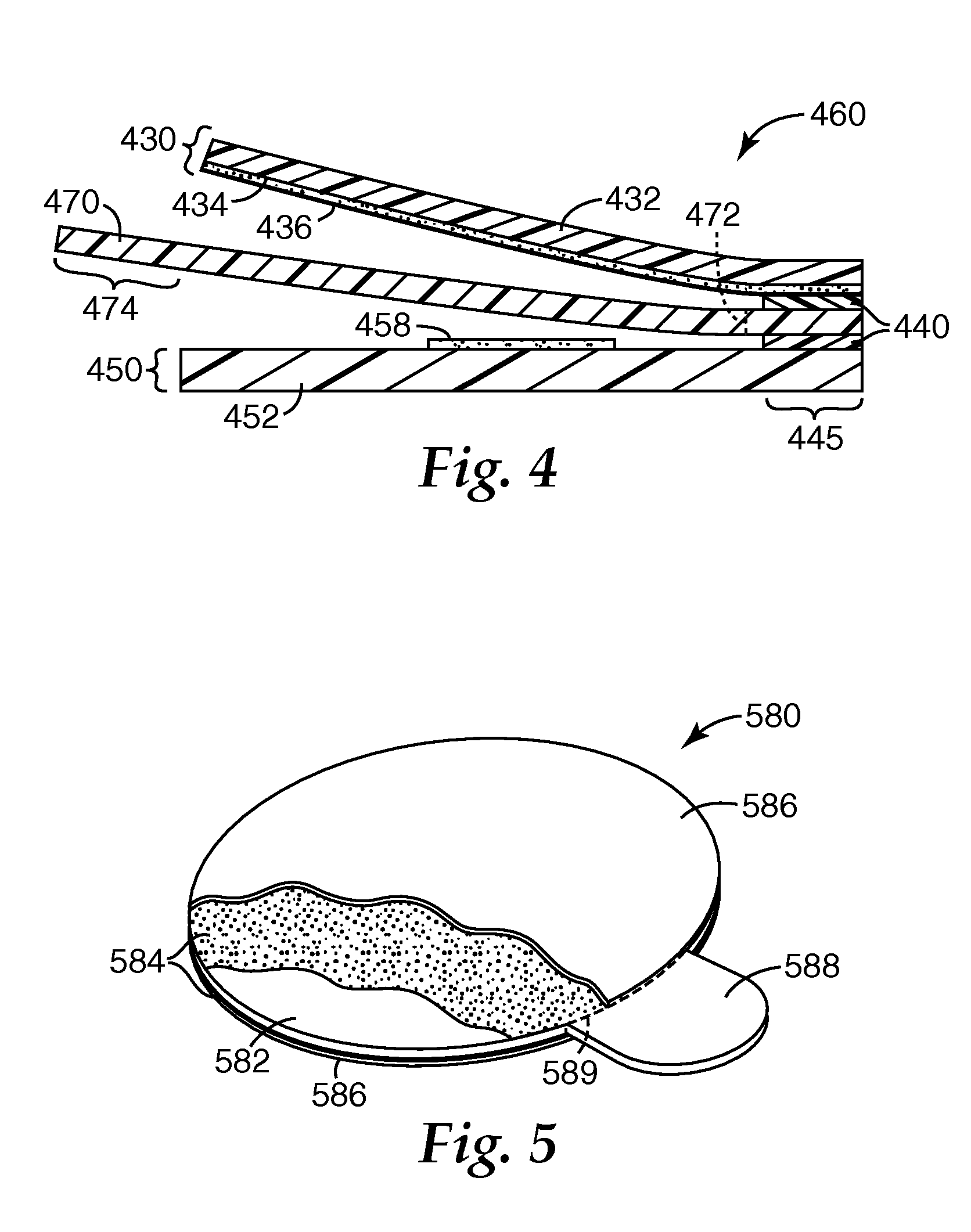Environmental sampling articles and methods
a sampling and environmental technology, applied in the field of environmental sampling articles and methods, can solve the problems of contamination of surfaces (e.g., solid surfaces, equipment surfaces, protective clothing, etc.) and death (mortality)
- Summary
- Abstract
- Description
- Claims
- Application Information
AI Technical Summary
Benefits of technology
Problems solved by technology
Method used
Image
Examples
example 1
Detection and Enumeration of Listeria innocua from a Surface
Preparation of Reagent Strips
[0079]Liquid growth media for the growth and detection of Listeria species was made according to the formula listed in Table 1. The enzyme inducer (1-O-methyl-α-D-mannopyranoside) and chromogenic enzyme substrate (6-Chloro-3-indoxyl-α-D-mannopyranoside) were obtained from Biosynth International (Naperville, Ill.). M150 Ethanol-washed Guar was obtained from Danisco (Kreutzlingen, Switzerland).
TABLE 1Broth medium for growth and detection of Listeria species.IngredientConcentration (g / L)Pancreatic Digest of Casein10.0Proteose Peptone #310.0Nalidixic Acid0.036Acriflavin0.03Moxalactam0.03Polymyxin B Sulfate (7690 units / mg)0.001Yeast Extract8.0Sodium Chloride40.0Lithium Chloride4.5Disodium Phosphate12.0Monopotassium phosphate6.01-O-methyl-α-D-mannopyranoside5.06-Chloro-3-indoxyl-α-D-mannopyranoside2.0Xanthan gum8.0M150 Ethanol-washed Guar4.0
[0080]The substrate used for coating the reagent strip was 8....
example 2
Detection and Enumeration of Staphylococcus Aureus from a Surface
Preparation of the Sample Housing Devices
[0091]The sample housing devices used in this experiment were 3M PETRIFILM Staph Express (STX) Count System plates obtained from 3M Company (St. Paul, Minn.). The dry media in each plate was hydrated with 1 milliliter of Butterfield's phosphate diluent and was allowed to gel prior to using the plates in this experiment.
Preparation of Sample Collectors
[0092]Type I sample collectors were constructed using clear 3 mil polyester film as described in Example 1. Type II sample collectors were constructed by laminating the designated bonded material (e.g., cheesecloth) to clear 3 mil polyethylene film using a pressure-sensitive acrylic-based adhesive. CEREX G192988 nonwoven material was obtained from CEREX Advanced Fabrics (Cantonment, Fla.). Hanes Wetlaid Hydroguard 150 HEM PET / cellulose was obtained from Hanes Industries (Conover, N.C.). The Hanes material was pretreated with SPAN 20...
PUM
| Property | Measurement | Unit |
|---|---|---|
| thickness | aaaaa | aaaaa |
| thick | aaaaa | aaaaa |
| thick | aaaaa | aaaaa |
Abstract
Description
Claims
Application Information
 Login to View More
Login to View More - R&D
- Intellectual Property
- Life Sciences
- Materials
- Tech Scout
- Unparalleled Data Quality
- Higher Quality Content
- 60% Fewer Hallucinations
Browse by: Latest US Patents, China's latest patents, Technical Efficacy Thesaurus, Application Domain, Technology Topic, Popular Technical Reports.
© 2025 PatSnap. All rights reserved.Legal|Privacy policy|Modern Slavery Act Transparency Statement|Sitemap|About US| Contact US: help@patsnap.com



